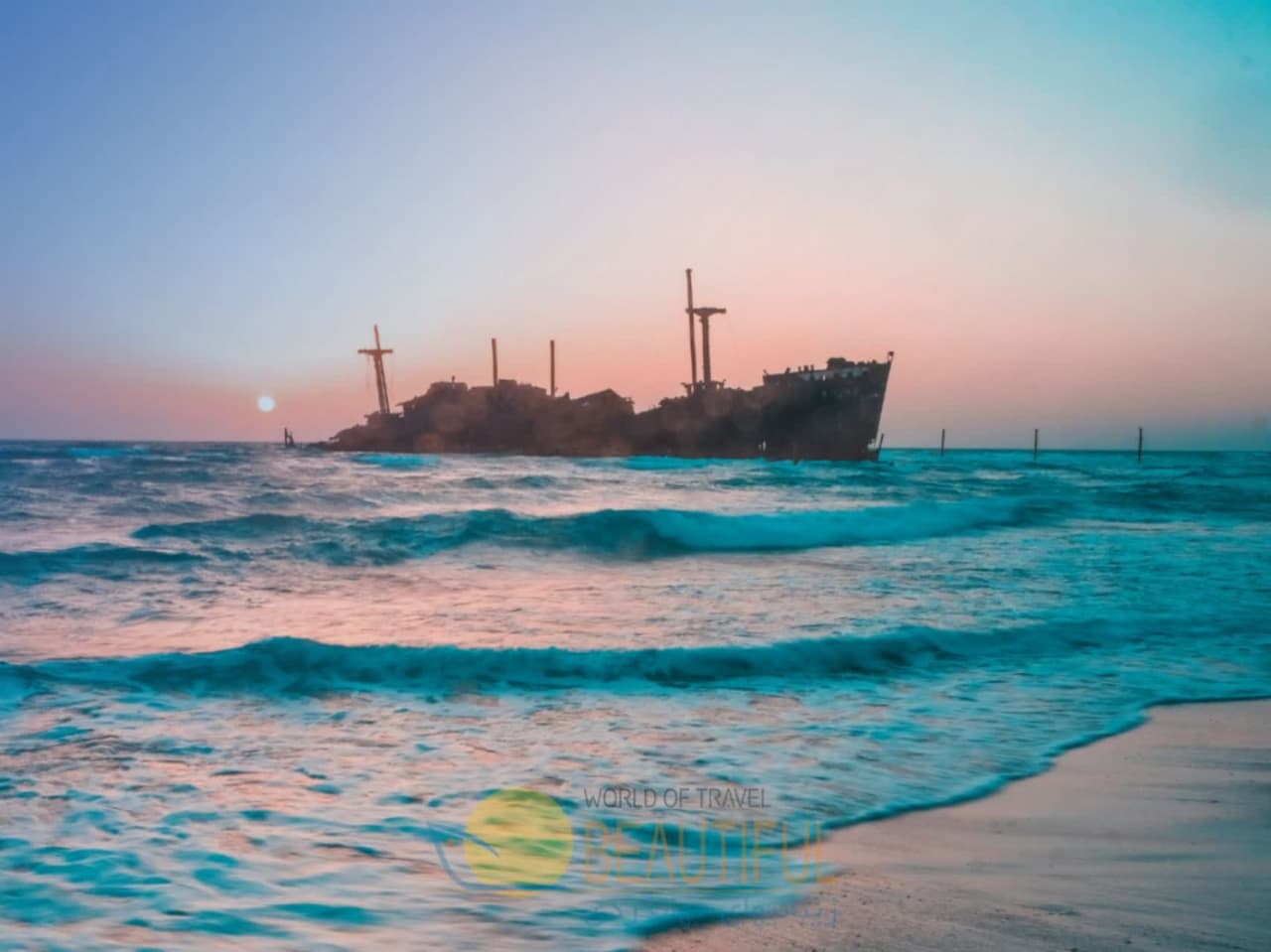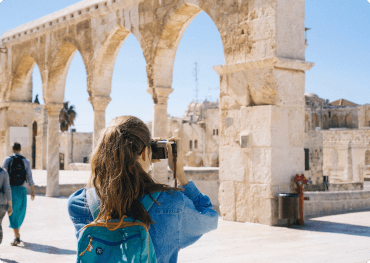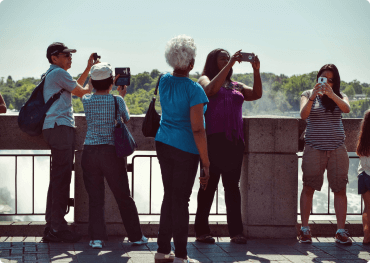
CU-118
Package Details
Day 1: Tehran – Kish Island
Arrival at Tehran meet and assist at airport and then transfer to Hotel.
Half day Tehran city tour to visit archaeological, glass & ceramics museums.
Evening flight to Kish, check in to hotel. Arrive at Kish Airport and be transferred to your hotel.
The rest of the time is free to explore the beautiful tropical sights.
O/N: Kish Island.
Iran Bastan: It is an institution formed of two complexes, including the Museum of Ancient Iran which was inaugurated in 1937, and the Museum of the (post-) Islamic Era which was inaugurated in 1972.
It hosts historical monuments dating back through preserved ancient and medieval Iranian antiquities, including pottery vessels, metal objects, textile remains, and some rare books and coins.There are a number of research departments in the museum, including Paleolithic and Osteological departments, and a center for Pottery Studies.Iran Ancient Museum, the first museum in Iran at the beginning of the Street 30 July, in the western part of the drill Tehran is located on the street C-beams. Construction of the museum on 21 May 1313 and the sun on the orders of Reza Shah by French architect, Andre Godard, began. The museum building was completed in 1316 and the museum opened to the public. 5,500 square meters of land assigned to this museum, which is 2744 square meters.
Glassware and Ceramic Museum:is one of the museums in Tehran is. This historic house built in Qajar era and in Tehran. Avenue C bar is located. The effect on 7 Persian date Ordibehesht 1377 with registration number 2014 as one of the national monuments has been registered. Museum of Glass Museum of Glass and pottery.
This sets up 1330 home and work Qvamalsltnh and then for seven years was in the hands of the Egyptian Embassy. Then, to the Embassy of Afghanistan, Bank of Commerce, in 1355 with the cooperation of Iranian and Austrian engineers began to change.
Day 2: Kish Island
Day free to enjoy this spectacular Island
The Park with the oldest trees on the island. Entry is free for all.
A small zoo with exotic animals on display Underground Town of Cariz: Is more than 2,500 years old,
And currently it has been converted into an underground town at a depth of 16 meters below the surface,
With an area of more than 10,000 square miles.
O/N: Kish.
Day 3: Kish Island-Shiraz
After breakfast, check out hotel and transfer to airport fly to Shiraz.
Afternoon visit Naghsh-E-Rustam, Persepolis.
O/N: Shiraz.
Persepolis the name of one of the ancient cities of Iran that joined over the years, the capital 's stately and ceremonial monarchy at the time of the Achaemenid Empire was. In this ancient city called Persepolis palace that during the reign of Darius , Xerxes and Artaxerxes was built and was built for about 200 years. On the first day of the New Year , many groups from different countries representing Satrapyha or governments gathered in Persepolis with diverse took offerings and gifts were presented to the king.
Persepolis in 518 BCE as the new capital of the Achaemenid the gamers began. Founder of Persepolis, Darius was, of course, after his son Xerxes and his grandson Artaxerxes I to extend this series to expand it added. Many existing knowledge about the history and culture of the Achaemenid stone inscriptions and Flznvshthhayy is available for the palaces and on the walls and the tablet is engraved. Sumner has estimated that the plain of Persepolis which contains 39 residential camp was in the Achaemenid period 43, 600 people had. Historians believe that Alexander the Macedonian commander Greek in 330 BC, invaded Iran and burned Persepolis and probably a large part of the books, Achaemenid art and culture destroyed by it. However, the ruins of this place is still up and archeology of its ruins signs of fire and rush to acknowledge it.
This place since 1979, one of Iran's record on the UNESCO World Heritage is.
Persepolis in the northern city near Shiraz , south of Fars province (northeast of Shiraz ) is replaced.
At a distance of six and a half kilometers from Persepolis, Naqsh-e Rustam is located.
Naqsh-e Rustam name of the ancient collection Zangiabad village located in the northern city of Shiraz in Fars province of Iran , which is 6 kilometers from Persepolis is located. Yadmanhayy the archaeological site of the Elamite , Achaemenid and Sassanid in its place and has around 1200 BC to 625 AD was the focus of attention because the tomb four kings Achaemenid, Sassanian reliefs of a number of major events, building the Kaaba of Zoroaster and Vyranshdhay relief from the Elamite era in this place and in the Sassanid era, Naqsh-e Rustam area of religious and national importance have been.
In the past, this place was Dogonbadan Segonbad or among the people of the region were caught by the names of the mountain, the mountain was also called Nfsht pool or mountains after the Iranians and possibly the name of Naqsh-e Rustam between Rostam , the hero of Shahnameh and communicate the Sassanid kings were Sngngarhhay It was to this place.
The oldest role in Naqsh-e Rustam is the Elamite period and the king and queen of the gods and goddesses were portrayed, but later in the Sassanid era, Bahram II parts of it wiped and his role and his courtiers erected in its place. Kaaba of Zoroaster and Brjmannd in the Mhvthast stone building that was built during the Achaemenid period is likely to be unclear and its application is based on three corners of the building has two inscriptions of Shapur I and Kartir written that historically are of great value.
Four Tomb dungeon in the bosom of the Mountain of Mercy have been dug that belonged to Darius the Great , Xerxes , Artaxerxes I , and Darius II that all of them have the same properties.
Ardashir the first one who in this area, Sngngarhay shaved and Tajgyryash scene of Ahura Mazda recorded. He also Tajgzaryshan Sassanid kings scenes or descriptions of battles and Aftkhartshan on the breast of the mountain. That Artaxerxes and his son Shapur II Nqshbrjsthhayy counterparts in the Achaemenid reliefs in Naqsh-e Rustam shaved, probably in imitation of the past have been the political and cultural sequences.
Day 4: Shiraz
Full day city tour of Shiraz visit Vakil complex (bath, museum & bazaar), tombs of Hafez & Saadi.
O/N: Shiraz.
Zandieh set of buildings that included the market, and the bathroom is Vakil Mosque of Shiraz, as follows
Vakil Bazaar in Shiraz, Iran is one of the most traditional and historical markets at the behest of Karim Khan Zand (1172 - 1193 AD) and is now at the center of the city (East Martyrs' Square) is located. Lawyer historic mosque and baths are also next to the market.
Bathroom lawyer Karim Khan Zand was built by the Zand period. The bathroom in the center of the city and other nearby buildings Zand period such as markets and mosques lawyer's lawyer.The interesting part is the bathroom alcove called for the king Bvdh. part of the building number 917 has been registered in the national index Iran.
Vakil Mosque in Shiraz Zand set of buildings, next to bathrooms is a lawyer at the center of the city. It is one of the beautiful buildings and the Zand period is very strong, which is important in terms of art and architecture, the mosque order of Karim Khan Zand and has made plans for both the southern and eastern porch and yard are two. South yard integrated with stone columns and architectural characteristics from the spiral of Attraction is the mosque, which has 48 stone pillars integrated.
The Tomb of Saadi is a tomb and mausoleum dedicated to the Persian poet Saadi in the Iranian city of Shiraz. Saadi was buried at the end of his life at a Khanqah at the current location. In the 13th century a tomb built for Saadi by Shams al-Din Juvayni, the vizir of Abaqa Khan. In the 17th century, this tomb was destroyed. During the reign of Karim Khanwas built a mausoleum of two floors of brick and plaster, flanked by two rooms. The current building was built between 1950 and 1952 to a design by the architect Mohsen Foroughi and is inspired by the Chehel Sotoun with a fusion of old and new architectural elements. Around the tomb on the walls are seven verses of Saadi’s poems.
The Tomb of Hafez and its associated memorial hall, the Hāfezieh, are two memorial structures erected in the northern edge of Shiraz, Iran, in memory of the celebrated Persian poet Hafez. The open pavilion structures are situated in the Musalla Gardens on the north bank of a seasonal river and house the marble tomb of Hafez. The present buildings, built in 1935 and designed by the French architect and archaeologist André Godard, are at the site of previous structures, the best-known of which was built in 1773. The tomb, its gardens, and the surrounding memorials to other great figures are a focus of tourism in Shiraz.
Day 5: Shiraz
Full day city tour of Eram garden, Narenjestan garden, Nasir-ol-Molk Mosque.
O/N: Shiraz.
Eram Garden is a historic Persian garden in Shiraz, Iran.The garden, and the building within it, are located at the northern shore of the Khoshk River in the Fars province.
Both the building and the garden were built during the middle of thirteenth century by the Ilkhanate or a paramount chief of the Qashqai tribes of Pars. The original layout of the garden however, with its quadripartite Persian Paradise garden structure was most likely laid in eleventh century by the Seljuqs, and was then referred to as the "Bāq e Shāh" ("the king's garden" in Persian) and was much less complicated or ornamental. Cornelius de Bruyn, a traveller from the Netherlands, wrote a description of the gardens in the eighteenth century.
Narenjestan Qavam House:The consistency of the prince in 1252. BC Persian rule was appointed to her home in the neighborhoods ( neighborhoods Balakft ), the historic buildings and residential construction that led to the formation of consistency. This sets the consistency between the public garden known today by the name of its exterior facade famous Orangery is consistency.Between 1257 and 1267 coincided with the consistency of Nasser al-Din Shah Qajar and has been completed. The complex consists of several elements that most of these elements are Gchynh bathroom, Hosseinieh consistency, consistency schools (house beverages), inner consistency (home ornament ol), Court House consistency (Orangery), consistency and an en suite bathroom stalls and Znjyrkhanh (now defunct). Of course, there Bazarchhay in the series due to street construction Lotf Ali Khan is gone. Orangery building solar In 1345 Shiraz University were awarded between 1348 to 1358 solar Asian Institute , headed by Professor Arthur Upham Pope , Iran was famous.
The Nasir ol Molk Mosque, also known as the Pink Mosque, is a traditional mosque in Shiraz, Iran. It is located at the district of Gowad-e-Arabān, near Šāh Čerāq Mosque.
The mosque includes extensive colored glass in its facade, and displays other traditional elements such as the Panj Kāse ("five concaved") design. It is named in popular culture as the Pink Mosque, due to the usage of considerable pink color tiles for its interior design.
The mosque was built during the Qajar era, and is still in use under protection by Endowment Foundation of Nasir ol Molk. It was built from 1876 to 1888, by the order of Mirzā Hasan Ali (Nasir ol Molk), a Qajar ruler. The designers were Mohammad Hasan-e-Memār, an Iranian architect, and Mohammad Rezā Kāshi-Sāz-e-Širāzi.
Day 6: Shiraz-Isfahan
Drive to Isfahan (483 km). Arrival to Isfahan and visit old bridges.
O/N: Isfahan.
Allāhverdi Khan Bridge, popularly known as Si-o-seh pol “The bridge of thirty-three spans” is one of the eleven bridges of Isfahan, Iran and the longest bridge on Zayandeh River with the total length of 297.76 metres (976.9 ft). It is highly ranked as being one of the most famous examples of Safavid bridge design.
It was constructed by the finance and the inspection of Allahverdi Khan Undiladze chancellor of Shah Abbas I, an ethnic Georgian, it consists of two rows of 33 arches from either sides, left and right.
There is a larger base plank at the start of the bridge where the Zayandeh River flows under it, supporting a tea house which nowadays is abandoned due to the shortage of water and the river drought.
Khaju Bridge is a bridge in the province of Isfahan, Iran, which has been described as the finest in the province. It was built by the Persian Safavid king, Shah Abbas II around 1650, on the foundations of an older bridge.
Serving as both a bridge, and a dam (or a weir), it links the Khaju quarter on the north bank with the Zoroastrian quarter across the Zayandeh River. Although architecturally functioning as a bridge and a weir, it also served a primary function as a buildingand a place for public meetings. This structure was originally decorated with artistic tilework and paintings, and served as a teahouse.
Day 7: Isfahan
Full day city tour to visit: Naghsh-e Jahan complex include Imam & Sheikh Lotfollah mosque,
Aliqapu Palace & Bazaar (for shopping) Chehel Sotoon.
O/N Isfahan.
Naqsh-e Jahan Square, known as Imam Square, formerly known as Shah Square, is a square situated at the center of Isfahan city, Iran. Constructed between 1598 and 1629, it is now an important historical site, and one of UNESCO's World Heritage Sites. It is 160 metres (520 ft) wide by 560 metres (1,840 ft) long (an area of 89,600 square metres (964,000 sq ft)). The square is surrounded by buildings from the Safavid era. The Shah Mosque is situated on the south side of this square.
On the west side is the Ali Qapu Palace. Sheikh Lotf Allah Mosque is situated on the eastern side of this square and at the northern side Keisaria gate opens into the Isfahan Grand Bazaar. Today, Namaaz-e Jom'eh (the Muslim Friday prayer) is held in the Shah Mosque.The square is depicted on the reverse of the Iranian 20,000 rials banknote.
The Lotfollah Mosque : The Lotfollah Mosque had a secret entrance that spanned underneath the Maidan, from the Palace on the opposite side of the square.
Of the four monuments that dominated the perimeter of the Naqsh-e Jahan square, the Lotfollah Mosque, opposite the palace, was the first to be built. The purpose of this mosque was for it to be a private mosque of the royal court, unlike the Shah mosque|Masjed-e Shah, which was meant for the public.[16] For this reason, the mosque does not have any minarets and is of a smaller size. Indeed, few Westerners at the time of the Safavids even paid any attention to this mosque, and they certainly did not have access to it. It wasn't until centuries later, when the doors were opened to the public, that ordinary people could admire the effort that Shah Abbas had put into making this a sacred place for the ladies of his harem, and the exquisite tile-work, which is far superior to those covering the Shah Mosque.
Ali Qapu is in effect but a pavilion that marks the entrance to the vast royal residential quarter of the Safavid Isfahan which stretched from the Maidan Naqsh-i-Jahan to the Chahar Bagh Boulevard. The name is made of two elements: "Ali", Arabic for exalted, and "Qapu" Turkic for portal or royal threshold. The compound stands for "Exalted Porte". This name was chosen by the Safavids to rival the Ottomans' celebrated name for their court : Bab-i Ali, or the "Sublime Porte"). It was here that the great monarch used to entertain noble visitors, and foreign ambassadors. Shah Abbas, here for the first time celebrated the Nowruz (New Year's Day) of 1006 AH / 1597 A.D. A large and massive rectangular structure, the Ali Qapu is 48 m (157 ft) high and has six floors, fronted with a wide terrace whose ceiling is inlaid and supported by wooden columns.On the sixth floor, the royal reception and banquets were held. The largest rooms are found on this floor. The stucco decoration of the banquet hall abounds in motif of various vessels and cups. The sixth floor was popularly called (the music room) as it was here that various ensembles performed music and sang songs. From the upper galleries, the Safavid ruler watched polo games, maneuvers and horse-racing below in the Naqsh-i-Jahan square.
The Bazaar of Isfahan is a historical market and one of the oldest and largest bazaars of the Middle East. Although the present structure dates back to the Safavid era, parts of it are more than a thousand years old, dating back to the Seljuq dynasty. It is a vaulted, two kilometer street linking the old city with the new.
Chehel Sotoun ( “Forty Columns”) is a pavilion in the middle of a park at the far end of a long pool, in Isfahan, Iran, built by Shah Abbas II to be used for his entertainment and receptions. In this palace, Shah Abbas II and his successors would receive dignitaries and ambassadors, either on the terrace or in one of the stately reception halls.
The name, meaning "Forty Columns" in Persian, was inspired by the twenty slender wooden columns supporting the entrance pavilion, which, when reflected in the waters of the fountain, are said to appear to be forty.As with Ali Qapu, the palace contains many frescoes and paintings on ceramic. Many of the ceramic panels have been dispersed and are now in the possession of major museums in the west. They depict specific historical scenes such as the infamous Battle of Chaldiran against the Ottoman Sultan Selim I, the reception of an Uzbek King in 1646, when the palace had just been completed; the welcome extended to the Mughal Emperor, Humayun who took refuge in Iran in 1544; the battle of Taher-Abad in 1510 where the Safavid Shah Ismail I vanquished and killed the Uzbek King. A more recent painting depicts Nader Shah's victory against the Indian Army at Karnal in 1739.
There are also less historical, but even more aesthetic compositions in the traditional miniature style which celebrate the joy of life and love.
The Chehel Sotoun Palace is among the 9 Iranian Gardens which are collectively registered as one of the Iran’s 17 registered World Heritage Sites under the name of the Persian Garden.
Day 8: Isfahan
After breakfast, visit Hasht Behesht Palace, Vank Armenian Cathedral. Afternoon fly to Mashhad.
O/N: Mashhad.
Hasht Behesht, meaning "Eight Paradises" is a Safavid era palace in Isfahan.
It was built in 1669 and is today protected by Iran's Cultural Heritage Organization. Of more than forty mansions which existed in Isfahan during the rule of Safavids, this is the only one left today.
Holy Savior Cathedral is a cathedral located in the New Julfa district of Isfahan, Iran. It is commonly referred to as the Vank (Վանք), which means "monastery" or "convent" in Armenian language.
The cathedral was established in 1606, dedicated to the hundreds of thousands of Armenian deportees that were resettled by Shah Abbas I during the Ottoman War of 1603-1618.
The varying fortunes and independence of this suburb across the Zayande River and its eclectic mix of European missionaries, mercenaries and travelers can be traced almost chronologically in the cathedral's combination of building styles and contrasts in its external and internal architectural treatment.
Day 9: Mashhad
Excursion to Tous to visit holy shrine of Imam Reza.
O/N: Mashhad.
The Imam Reza shrine in Mashhad, Iran is a complex which contains the mausoleum of Imam Reza, the eighth Imam of Twelver Shiites. It is the largest mosque in the world by dimension and the second largest by capacity. Also contained within the complex are the Goharshad Mosque, a museum, a library, four seminaries, a cemetery, the Razavi University of Islamic Sciences, a dining hall for pilgrims, vast prayer halls, and other buildings.
The complex is one of the tourism centers in Iran. The shrine itself covers an area of 267,079 m2 while the seven courtyards which surround it cover an area of 331,578 m2 - totaling 598,657 m2 (6,443,890 sq. ft.).
Day 10: Mashhad
Full day city tour of Neyshabour. Evening return to Mashhad and visit tomb of Ferdosi.
O/N: Mashhad.
The Mausoleum of Omar Khayyam is the tomb of Omar Khayyám located in Nishapur where Omar Khayyám was born and buried and where his mausoleum today remains a masterpiece of Iranian architecture visited by many people every year. It was completed in 1963.
Kamal-ol-Molk tomb building in the city of Neyshabur. It's location near the tomb of Attar in the neighborhood shadiyakh in Neyshabur (old town) and the current situation in the streets mysticism (Neyshabur) is.
Ferdowsi's tomb, a monument in a birch in the north of Mashhad in Khakjay Ferdowsi by Houshang Oxus based on previous designs by Karim Taherzadeh Behzad , with some variation in size and decoration, design and renovated. Architect and executor of construction work and Hussein Hussein Lorzadeh Hjarbashy Zanjani and salutary Taqi was the construction foreman.
The present building of the tomb in 1313 to coincide with the rituals of Ferdowsi Millennium opened. .
Day 11: Mashhad –Tehran
After breakfast, transfer to airport and Fly back Tehran.
O/N: Tehran.
Day 12: Departure
Early morning transfer to International airport, back to home.
Details
Pellentesque accumsan magna in augue sagittis, non fringilla eros molestie. Sed feugiat mi nec ex vehicula, nec vestibulum orci semper. Class aptent taciti sociosqu ad litora torquent per conubia nostra, per inceptos himenaeos. Donec tristique commodo fringilla. Duis aliquet varius mauris eget rutrum. Nullam sit amet justo consequat, bibendum orci in, convallis enim. Proin convallis neque viverra finibus cursus. Mauris lacinia lacinia erat in finibus.
Pellentesque accumsan magna in augue sagittis, non fringilla eros molestie. Sed feugiat mi nec ex vehicula, nec vestibulum orci semper. Class aptent taciti sociosqu ad litora torquent per conubia nostra, per inceptos himenaeos. Donec tristique commodo fringilla.
- Specilaized Bilingual Guide
- Private Transport
- Entrance Fees
- Box Lunch,Water,Dinner and Snacks
Pellentesque accumsan magna in augue sagittis, non fringilla eros molestie. Sed feugiat mi nec ex vehicula, nec vestibulum orci semper. Class aptent taciti sociosqu ad litora torquent per conubia nostra, per inceptos himenaeos. Donec tristique commodo fringilla.
- Specilaized Bilingual Guide
- Private Transport
- Entrance Fees
- Box Lunch,Water,Dinner and Snacks
Pellentesque accumsan magna in augue sagittis, non fringilla eros molestie. Sed feugiat mi nec ex vehicula, nec vestibulum orci semper. Class aptent taciti sociosqu ad litora torquent per conubia nostra, per inceptos himenaeos. Donec tristique commodo fringilla.
- Specilaized Bilingual Guide
- Private Transport
- Entrance Fees
- Box Lunch,Water,Dinner and Snacks
Pellentesque accumsan magna in augue sagittis, non fringilla eros molestie. Sed feugiat mi nec ex vehicula, nec vestibulum orci semper. Class aptent taciti sociosqu ad litora torquent per conubia nostra, per inceptos himenaeos. Donec tristique commodo fringilla.
- Specilaized Bilingual Guide
- Private Transport
- Entrance Fees
- Box Lunch,Water,Dinner and Snacks
Pellentesque accumsan magna in augue sagittis, non fringilla eros molestie. Sed feugiat mi nec ex vehicula, nec vestibulum orci semper. Class aptent taciti sociosqu ad litora torquent per conubia nostra, per inceptos himenaeos. Donec tristique commodo fringilla.
- Specilaized Bilingual Guide
- Private Transport
- Entrance Fees
- Box Lunch,Water,Dinner and Snacks






















